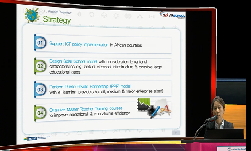Although the prime mission of colleges and universities is education, it is obvious that the federal government also sees higher education as a prime way to address social problems. In order to use higher education in this way, the federal government...
http://chineseinput.net/에서 pinyin(병음)방식으로 중국어를 변환할 수 있습니다.
변환된 중국어를 복사하여 사용하시면 됩니다.
- 中文 을 입력하시려면 zhongwen을 입력하시고 space를누르시면됩니다.
- 北京 을 입력하시려면 beijing을 입력하시고 space를 누르시면 됩니다.
https://www.riss.kr/link?id=T10565954
- 저자
-
발행사항
[S.l.]: University of Minnesota 2002
-
학위수여대학
University of Minnesota
-
수여연도
2002
-
작성언어
영어
- 주제어
-
학위
Ph.D.
-
페이지수
177 p.
-
지도교수/심사위원
Adviser: Darrell R. Lewis.
-
0
상세조회 -
0
다운로드
소속기관이 구독 중이 아닌 경우 오후 4시부터 익일 오전 9시까지 원문보기가 가능합니다.
부가정보
다국어 초록 (Multilingual Abstract)
This study focused on developing a conceptual framework for cost collection at colleges and universities and on assessing the cost impact of federal legislation on a representative mid-sized private, four-year institution in the Midwest. Additionally, a complete list of federal legislation affecting higher education had to be compiled before costs could be collected.
The outcomes of this cost impact study included the development of a complete legislative typology for federal legislation affecting higher education, including more than 200 laws; a cost model framework and worksheet for data collection; and actual cost data of federal legislation implementation at an institution of higher education. Specific cost data at the institution under study demonstrated that the cost impact of federal legislation to the institution was 6.5% of the institution's operating budget for the 2000–2001 fiscal year.
Although the prime mission of colleges and universities is education, it is obvious that the federal government also sees higher education as a prime way to address social problems. In order to use higher education in this way, the federal government has passed numerous pieces of legislation affecting higher education. Although in the early years the legislation came without major costs to higher education, this is no longer the case. In fact, many colleges and universities are quite concerned that the cost of legislation will decrease the monetary resources available for their prime mission, education; and that this decrease in resources will result in the diminishment of quality in the educational product offered. Consequently, there have been numerous calls for the federal government to stop unfunded mandates and reimburse colleges and universities for the cost of implementing the legislation. However, even though many complaints have been voiced about federal legislation squeezing already tight higher education budgets, few studies have been done to actually document these costs. There was a need, therefore, to determine the true costs of such legislation to higher education. There was also a need to develop a conceptual framework so that policy and decision makers could systematically assess the costs of these federal mandates.
This study focused on developing a conceptual framework for cost collection at colleges and universities and on assessing the cost impact of federal legislation on a representative mid-sized private, four-year institution in the Midwest. Additionally, a complete list of federal legislation affecting higher education had to be compiled before costs could be collected.
The outcomes of this cost impact study included the development of a complete legislative typology for federal legislation affecting higher education, including more than 200 laws; a cost model framework and worksheet for data collection; and actual cost data of federal legislation implementation at an institution of higher education. Specific cost data at the institution under study demonstrated that the cost impact of federal legislation to the institution was 6.5% of the institution's operating budget for the 2000–2001 fiscal year.
분석정보
연관 공개강의(KOCW)
-

Education Policy at the Party Conferences
Teachers TV Teachers TV -

Further Education: Work Experience
Teachers TV Teachers TV -

2014 이러닝 국제 콘퍼런스 : What is the Lessons from Education Support Project~
한국교육정보진흥협회 Boseon, Kim -

Personal Finance Education: The Money Quiz
Teachers TV Teachers TV -

Alcohol Education: Here's What We Want
Teachers TV Teachers TV






